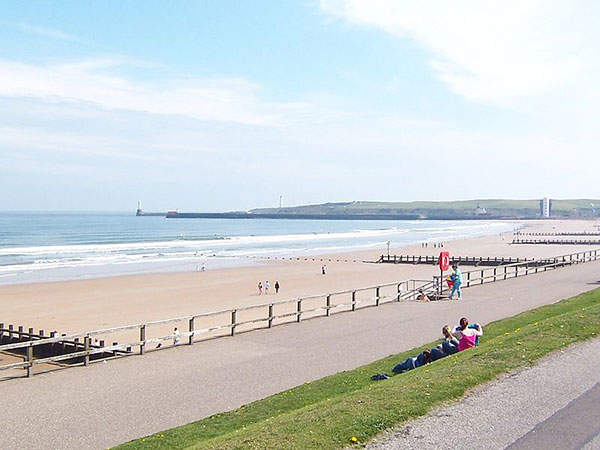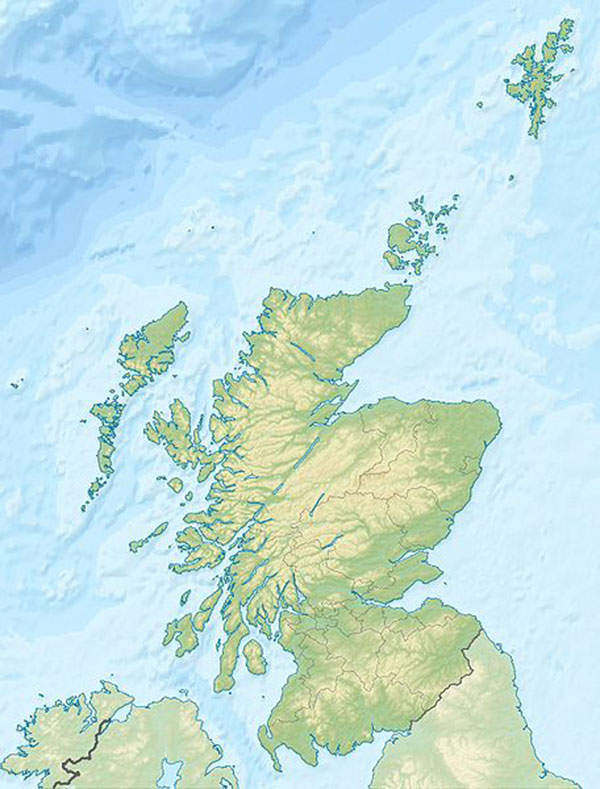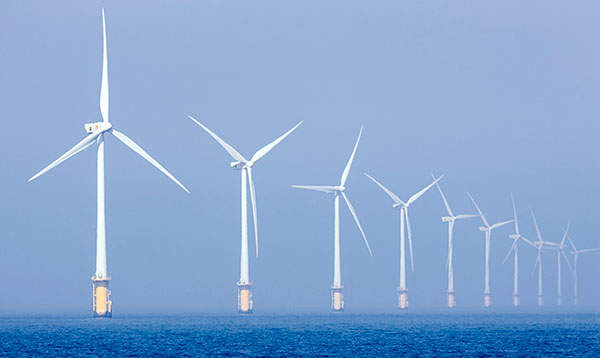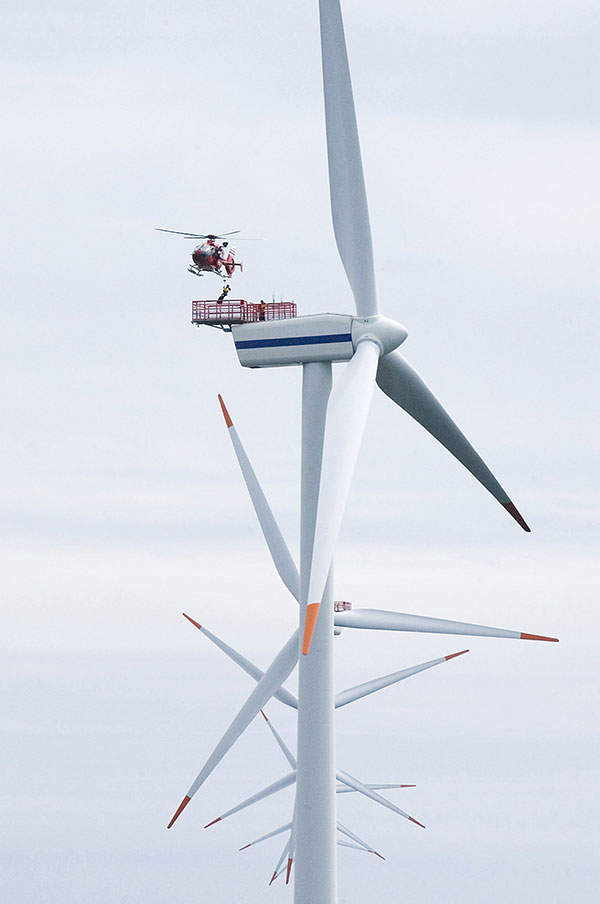The European Offshore Wind Deployment Centre (EOWDC) is located off the coast of Aberdeen, Scotland. The project consists of a commercial offshore wind farm (Aberdeen offshore wind farm) with an installed capacity of 93.2MW and associated facilities for research, testing and training.
The £230m ($349m) project is developed by the Aberdeen Offshore Wind Farm Ltd (AOWFL) joint venture, comprising of Vattenfall, Technip and the Aberdeen Renewable Energy Group (AREG).
The wind project received approval from the Scottish Government in March 2013 after being subject to controversies for more than two years. The offshore site investigation work was complete by April 2016, and offshore construction, including 66kV cabling, began in October 2016.
The first wind turbine of the project was successfully installed on 9 April 2018, and the final turbine was installed at the end of May 2018. The wind farm was officially opened in September 2018 and is expected to operate for approximately 20 years.
The project is anticipated to generate electricity sufficient to supply for approximately 70% of Aberdeen’s household demand while offsetting 132,977t of CO2 from the atmosphere.
Opposition from billionaire Donald Trump
American billionaire Donald Trump, who created the £750m ($1.1bn) Trump International Golf Links resort near the project site, tried to block the development of the wind deployment centre since late 2010.
His opposition focused on the claim that the wind farm would distort the sea view of the resort.
Mr Trump also mobilised criticisms over the project, including the allegation that the wind farm’s noisy and unsightly turbines would destroy Scotland’s natural heritage. He also highlighted the objection from the UK Ministry of Defence that the wind farm would affect the operation of military radar. The ministry, however, later dropped the opposition.
In April 2012, Mr Trump appeared in Scottish Parliament to build his case against the development of the wind farm. The government granted permission to develop the wind project in March 2013.
Mr Trump lost all subsequent appeals, and in December 2015 was unanimously found to be the loser of the case by the UK Supreme Court.
Development of the offshore wind farm
AOWFL was awarded the rights by the Crown Estate in August 2010 to develop the wind power project.
The consent application for a standard wind farm with 11 turbines was submitted in August 2011. The application was later altered to build a demonstration wind power project instead with new generation turbines technologies, complemented by research and testing facilities at the site.
A rallying call was also issued in 2011 to bring together turbine manufacturers, universities and research institutes for their involvement in the wind deployment project.
An addendum was submitted in July 2012, proposing an increase of the maximum turbine height and rotor diameter in order to accommodate the latest turbine models.
The planning application for onshore works, such as cable route and substation, was submitted to the Aberdeenshire Council in January 2013.
Funding the European Offshore Wind Deployment Centre
The project has been awarded a European Union grant of up to €40m ($51.2m) under the European Energy Programme for Recovery (EEPR) and is supported by AREG.
Details of the EOWDC, near Aberdeen
The wind farm comprises of nine Vestas V164-8.4MW and two V164-8.8MW offshore wind turbines, between 2km and 5km off the Aberdeenshire coast.
The turbines represent the latest models of high-capacity turbines for low-cost power generation. The new turbine technologies were tested offshore to demonstrate their capabilities and receive independent validation and accreditation before commercial deployment.
The turbines were installed in an area of 7km² in water depths ranging between 20m and 30m. The maximum tip height of the turbines is 191m, and the maximum rotor diameter of turbines is 164m.
The front row turbines of the wind farm are shorter in height (180.5m) and the larger turbines are installed in the seaward rows.
As many as 12 turbine suppliers had evinced interest to deploy their latest turbine models at the wind farm. Working agreements with six suppliers were signed in August 2012. The suppliers are reportedly Vistas, Repower, Gamesa, Siemens, Mitsubishi and Samsung.
Power transmission
The electricity generated by the turbines is transmitted through a 13km-long array cable to an offshore transformer.
Export cables transport the power to the onshore substation at Blackdog village, located to the south Hareburn Terrace. The transformer converts the 66kV electrical power from the wind farm to 132kV for transmission to SSE’s Dyce substation, for further transformation to 275kV, before transmitting to the National Grid network.
Four 33kV underground export cables are used to feed the power output of the wind farm into the national electricity transmission system (NETS).
Construction
Asian Hercules III, one of the world’s largest floating cranes, was used for installing steel jacket foundations for the EOWDC project.
With a lifting capacity of up to 5,000t and a hook height of 120m, the floating crane transported the jacket structures from Peterhead Port to the wind farm site and also lowered them on to the seabed in Aberdeen Bay.
The foundations were shipped by from Newcastle to Peterhead Port for marshalling by using two barges.
The export cables were installed by using the NDurance installation vessel.
Contractors involved
Fugro performed offshore works for the construction of the European Offshore Wind Deployment Centre in April 2016.
MHI Vestas Offshore is the supplier of V164-8.4/8.8MW turbines for the EOWDC. In addition, the company will also provide a full scope service for up to 20 years to optimise power production.
Boskalis was awarded a contract for offshore balance-of-plant works comprising the construction and installation of the offshore infrastructure that also includes foundations and cabling.
J Murphy & Sons is responsible for providing onshore substation and cabling work for the project.
Air traffic services company NATS was contracted to deliver radar mitigation services for the EOWDC in July 2016. In December 2016, JDR received a contract from VBMS to provide 66kV inter-array and export cables for the EOWDC.
Related content
AK-1000 Tidal Turbine Project, Scotland, United Kingdom
Atlantis Resource Corporation redeployed the AK-1000 tidal turbine at the European Marine Energy Centre (EMEC) in Orkney, Scotland, in August 2011.
Clyde Wind Farm, Scotland, United Kingdom
Clyde Wind Farm is an onshore wind-based power project being developed by Scottish and Southern Energy (SSE), a British energy company based in southern Scotland.







.gif)
